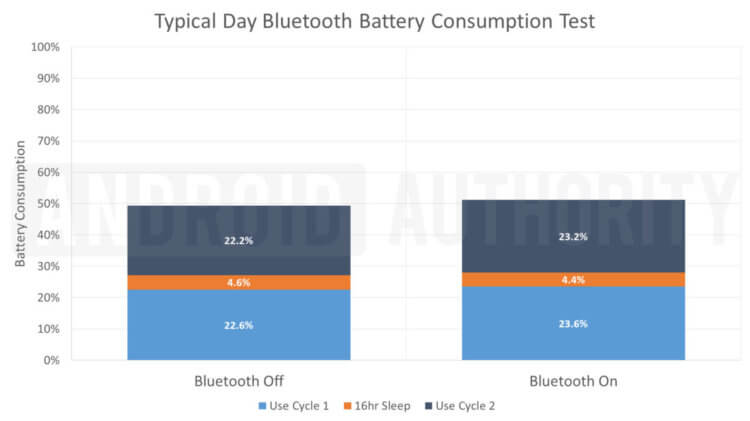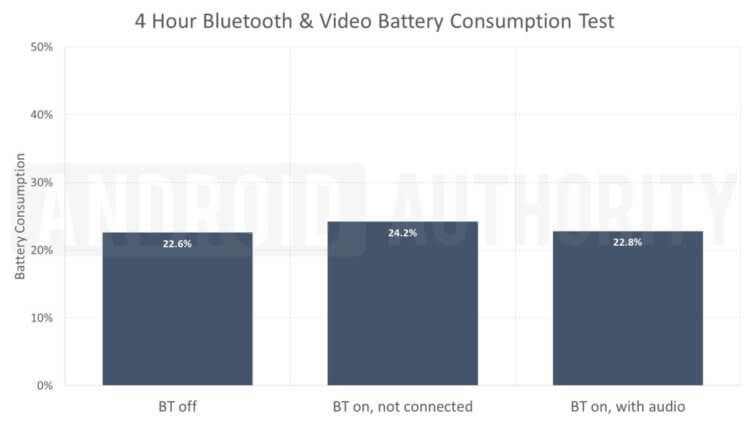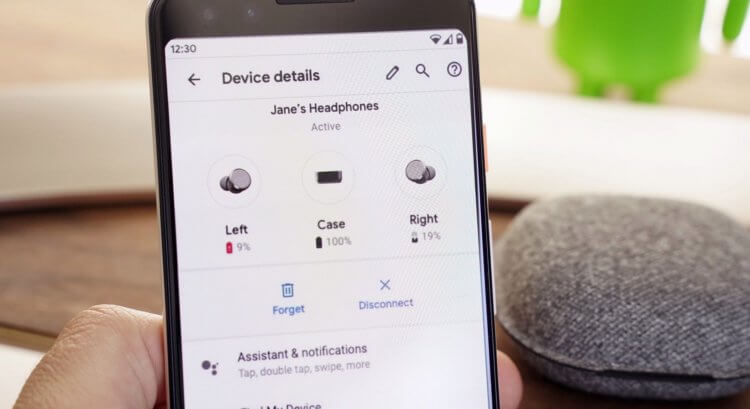Despite the fact that recently smartphones have begun to be equipped with more or less capacious batteries, with which they live for 2, and sometimes even 3 days, many of us still seem to be insufficient. Therefore, we do our best to help reduce energy consumption in order to extend the operating time of our devices even slightly. Some for this purpose constantly keep the power saving mode on, others reduce the brightness of the screen to a minimum, and the third – what would you think – turn off Bluetooth. Is there any practical sense in this?

Does Bluetooth consume smartphone energy? Let's check
If we judge, then the majority of users are divided into two types: those who disconnect Bluetooth during idle moments, and those who Bluetooth do not disconnect. The former sincerely believe that the wireless interface can waste battery power, while the latter are confident that this is not the case, since the energy efficiency of the protocol is at a high level. In principle, there are also those who believe that Bluetooth causes cancer, and therefore they never turn it on, but we will talk about them sometime next time. For now, let's focus on energy consumption.
Bluetooth battery consumption
To find out the real power consumption of Bluetooth – smartphone modules, five test devices were taken: Galaxy S20 +, Huawei P40 Pro, ZTE Axon 11, Pocophone F2 Pro and Realme X3 Superzoom. Each of them was tested in two scenarios:

Left – smartphone with disabled Bluetooth, right – with enabled
The first scenario: we started Bluetooth on smartphones in standby mode (without connecting to third-party devices) and watched how they would consume energy compared to the same devices, but with turned off Bluetooth. This scenario consisted of four stages. On the first, the smartphone spent 90 minutes browsing the web, on the second – 90 minutes of sleep, and on the third – another 90 minutes of surfing, which was followed by the fourth with 16 hours of sleep.

Left – smartphone with disabled Bluetooth, in the middle – with enabled Bluetooth in standby mode, right – with enabled Bluetooth and connected headphones
The second scenario (followed immediately after the second): on smartphones they started Bluetooth in standby mode, turned on a four-hour video and compared the consumption with the same devices, but turned off Bluetooth. And as a reference, they took the flow rate when connected to wireless headphones at the time of music playback. To be sure, the brightness of their screens was set at 200 nits, cellular data, NFC and other interfaces were turned off, except for Wi-Fi, through which the video signal was broadcast.
How much charging do they consume Bluetooth – headphones
Although averaging is usually a sure sign that someone wants to mislead you, in this case, measuring the 'average temperature in the hospital' did not fundamentally change anything. According to the results of tests, it turned out that active Bluetooth, but in standby mode, on average, consumes about 1.8% of the charge. After all, if with turned off Bluetooth smartphones consumed about 49.4% of the battery life, then with turned on – 51.2%. It turns out that if the device is used 'from and to', Bluetooth will consume about 4%.

If the smartphone broadcasts music to Bluetooth – headphones, it will use less energy than if Bluetooth is in standby mode
Is this a lot? Frankly, no. Not that I insisted that you leave Bluetooth active at all times, but rest assured that if you suddenly forget to disable this protocol, nothing bad will happen and the charging will not fly into the pipe. The power consumption of the wireless protocol in sleep mode is very indicative. For 16 hours that the smartphone was inactive, Bluetooth increased power consumption by 0.2%. But this is so small that the recorded result can be easily attributed to a statistical error.
But what surprised me the most was testing smartphones connected to Bluetooth – headphones. As it turned out, in the mode of playing music through a wireless headset, the battery consumes less energy than if Bluetooth is in an idle state. Despite the fact that at this moment the module does not connect the smartphone with external accessories, it wakes up from time to time and looks for compatible devices to connect. At the output, this gives an even more noticeable power consumption than transferring music.
